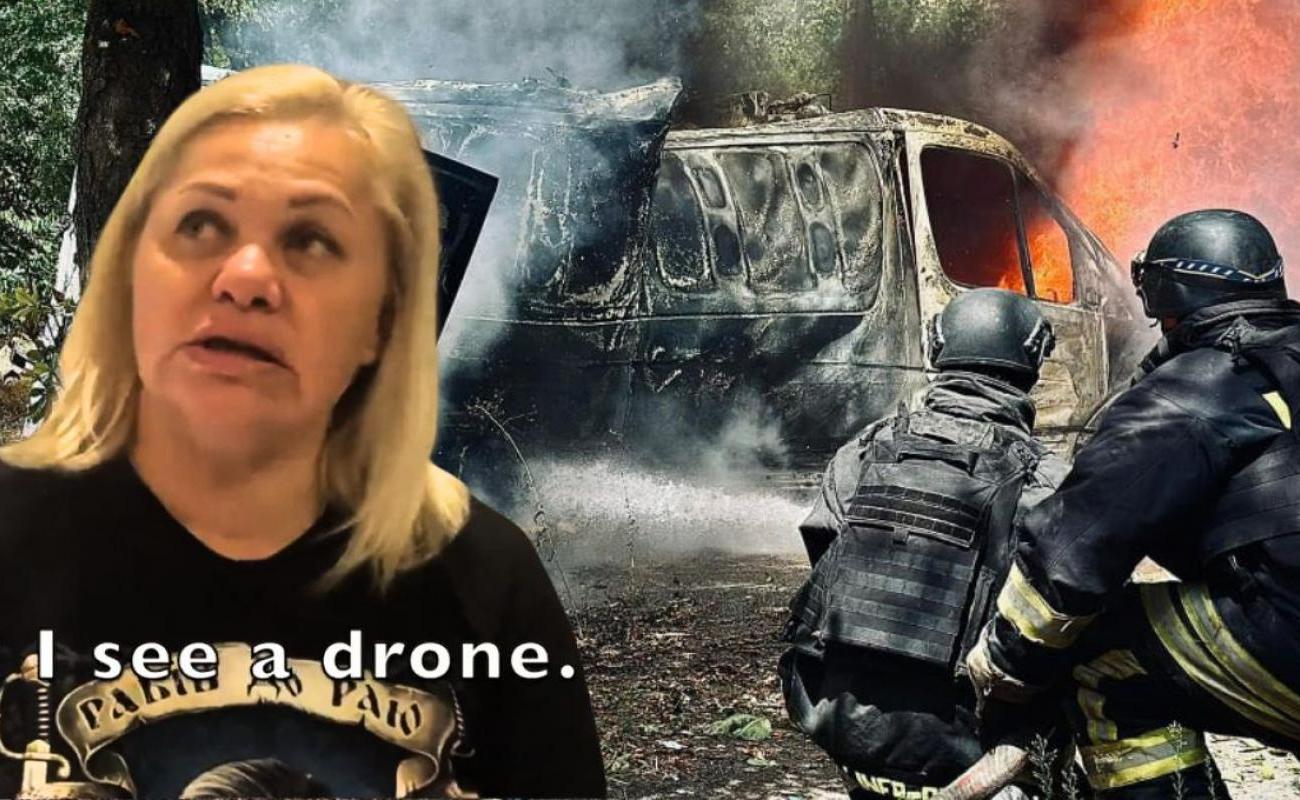Russian drones hunt civilians, terrorize Kherson with “human safari”

On 31 July 2024, at 5 pm, in the southern Ukrainian city of Kherson, as the record heat subsided, Oleksandr, a tall hollow-chested man in his 40s, packed trash into two plastic bags, put on a black baseball hat, stepped outside, looked at the clear blue sky, took a few steps towards the overfilled trash container at the end of the lane and heard loud buzzing.
A Russian military drone whirred about ten meters above his head like a giant bumble bee. Black, gangly, it hovered above, and a black-and-white Coca-Cola can was dangling from its bottom. Oleksandr froze. He knew that was an explosives load.
Drones—skids—have been dropping grenades and homemade explosives on the people in his neighborhood by the Dnipro River for two months. Breathless, Oleksandr jumped into the dense bushes and flattened against the fence. His heart beating fast, feeling like a hunted animal, Oleksandr raced towards the remains of a building wrecked by shelling across the lane. In his flip-flops, still clutching on the garbage bags, he ran like he had never run before.
The drone darted down, chasing him, hissing, squealing. Then, suddenly, it changed its course, plummeted into the fence—right where Oleksandr was hiding a moment ago—and with a crackling noise went up in black fumes.
The chase lasted about a minute. It wasn’t the first time, and it would not be the last, thought Oleksandr.
The next day, Russian military drones attacked Kherson region residents about 25 times. Nadiya, 45, a vigorous woman with hearty laughter, was cooking borshch in a private house by the Dnipro River when she heard buzzing. She peeked out the window, looked up, and saw a drone hovering above her roof. After ten minutes, it dropped the explosives into her yard, raising a dust storm.
“It was as if the Earth collapsed on top of me. The burning smell—no, stench!—was like ethyl alcohol. Thank God it was a small explosive,” said Nadiya. “I ended up with a small crater in my yard. I see these drones every day. Five or six might fly past me in the morning, maybe at lunchtime. They become active in the morning or the evening.”
Sveta, a short brunette in her late 40s, lives in a family house close to the river. Not much of her family is left: her husband of 25 years burned alive in a car after an artillery attack; her mother was killed by a Russian shell. To step outside, Sveta, just like her neighbors, has to first listen, then examine the skies, and, if all is clear, walks in short bursts, hiding in the bushes or under the trees.
“As soon as we leave the house,” explained Sveta, “two drones may follow. One drone starts monitoring. It is not loud. It summons the second drone: a killer drone that carries the explosives, chases the person, and then either drops the load or falls and blows up with it. This killer drone is loud. It hisses and squeals. Both drones go after civilians, be it a man, be it a woman, be it a child. Anyone is a target: elderly people, children, adults, bicyclists, someone walking a dog.”
